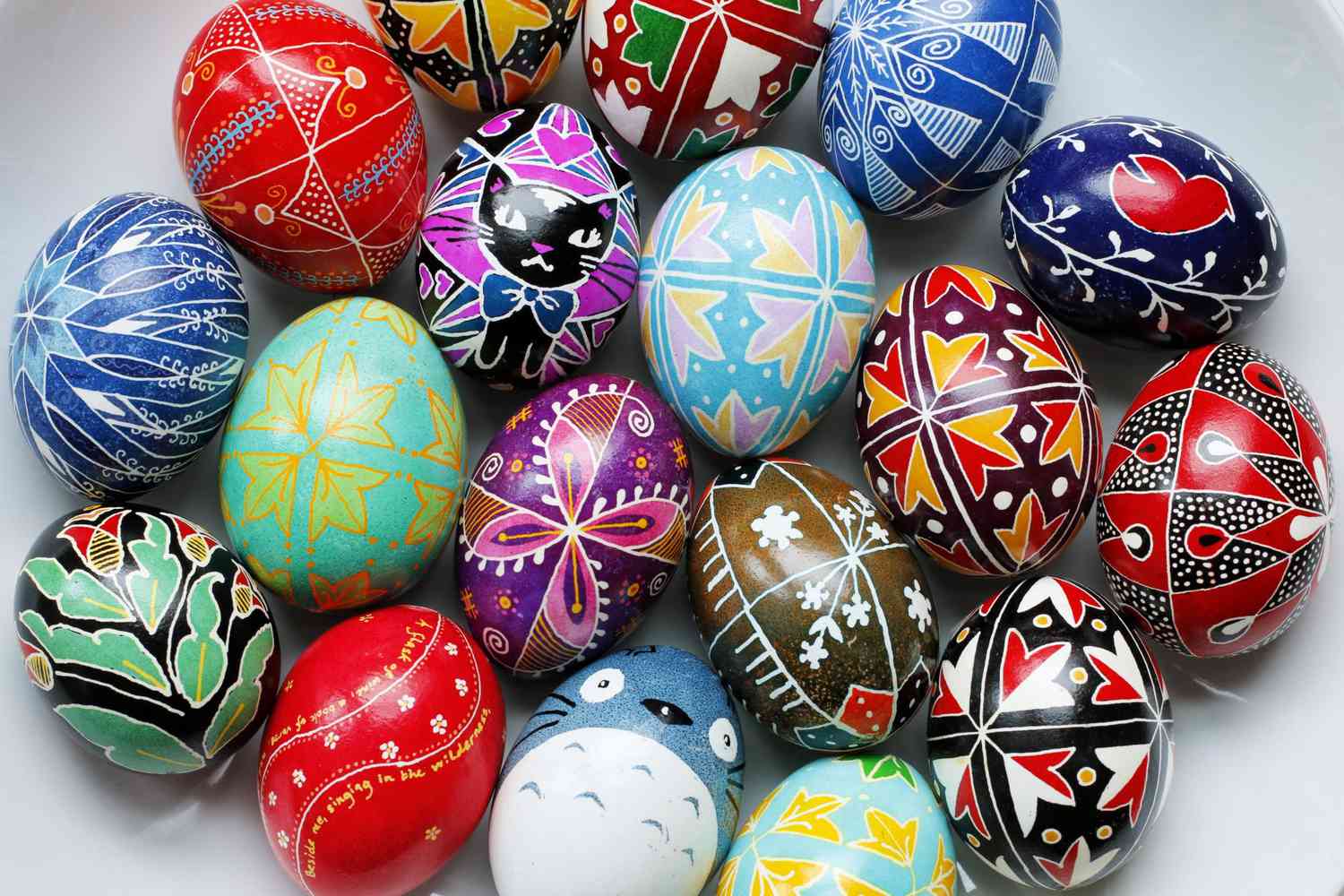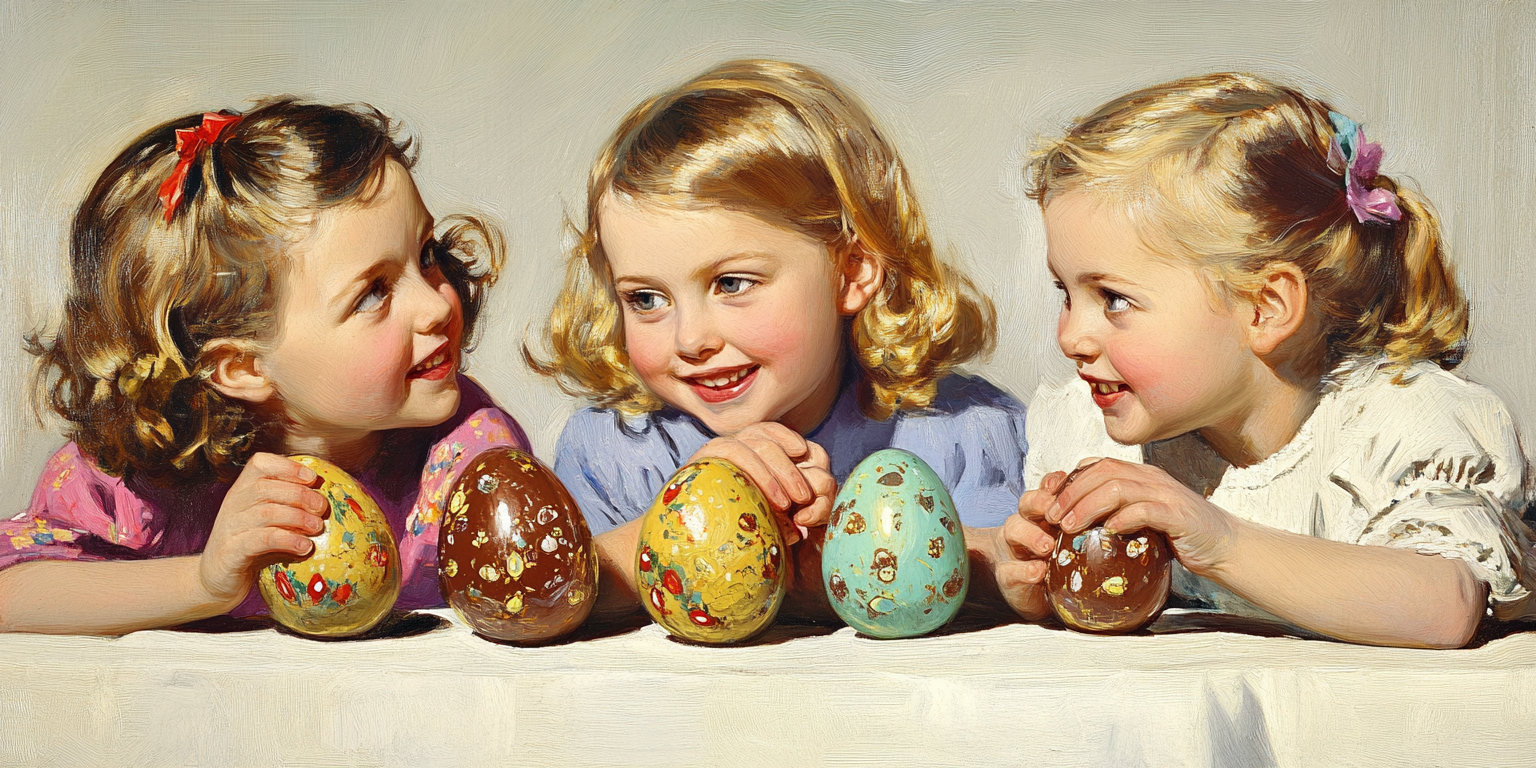The History and Marketing Evolution of Easter Eggs
A Journey from Ancient Traditions to a Modern Marketing Marvel
Easter eggs have become an iconic part of the Easter celebration, enjoyed by people of all ages across the world.
But how did this tradition start?
And how has it evolved into the multi-billion-pound industry we see today?
This article delves into the origins of giving Easter eggs, their journey into modern celebrations, and how brands have capitalised on this seasonal product. It’s time to crack open the history and marketing behind these beloved treats!
The Marketing Made Clear Podcast
Check out the Marketing Made Clear Podcast on all good streaming platforms including Spotify:
The Origins of Easter Eggs
The tradition of giving eggs dates back thousands of years, long before the advent of Christianity. In many ancient cultures, eggs were seen as a symbol of fertility, renewal, and the cycle of life. Ancient Egyptians, Persians, and Romans all viewed eggs as a representation of rebirth, often exchanging them as gifts during spring festivals to celebrate the changing seasons.
These early customs likely influenced the practice of giving eggs at Easter, blending pre-Christian traditions with later religious symbolism. The arrival of spring, marked by new life in nature, made eggs a fitting emblem of hope and renewal across multiple cultures.
In Christianity, eggs took on a new meaning, symbolising the resurrection of Jesus Christ. Early Christians in Mesopotamia are believed to have stained eggs red in memory of Christ’s blood. By the Middle Ages, eggs had become a common gift at Easter, often painted and decorated. Since eggs were forbidden during Lent, people would hard-boil them and save them to be eaten on Easter Sunday.
The tradition of exchanging decorated eggs spread across Europe, with different cultures developing their own variations. The famous Pysanky eggs (see below photo for reference) from Ukraine, intricately decorated with wax and dye, are an example of this artistic evolution. Clearly, the idea of egg-themed celebrations was no yolk! (sorry-not-sorry)

Easter Eggs in the Modern World
Easter eggs as we know them today, particularly chocolate eggs, didn’t emerge until the 19th century. The first chocolate Easter egg is credited to Fry’s of Bristol in 1873, followed closely by Cadbury in 1875.
These early eggs were simple and solid, a far cry from the elaborate designs we see today.
At the time, chocolate was a luxury item, and making it into a smooth, mouldable consistency required significant innovation.
The development of cocoa butter processing allowed chocolatiers to create hollow eggs, which quickly became popular due to their lighter texture and ability to be filled with surprises. By the early 20th century, Easter eggs were widely available across Europe, with manufacturers competing to create more decorative and flavourful varieties.

As production techniques advanced, Easter eggs began to feature intricate moulds, embossed patterns, and even edible decorations. During the mid-20th century, large-scale commercial brands such as Nestlé and Mars entered the market, offering affordable options alongside premium artisan chocolates. By the 21st century, Easter eggs had evolved from simple chocolate shells into elaborate, themed confections, often accompanied by additional treats such as truffles, sweets, and interactive packaging.
This transformed Easter eggs into not just a treat, but an egg-citing (sorry) experience, especially for children.
The modern Easter egg really took off in the mid-20th century as large-scale commercial production made them more widely accessible. Brands like Cadbury, Nestlé, and Mars expanded their Easter ranges, introducing more elaborate designs and different flavour variations. By the 1980s and 1990s, Easter egg packaging began evolving, with companies adding additional items such as mugs, egg cups, and branded toys inside the boxes to appeal to both children and collectors. These extras became a key selling point, with some eggs now seen as collectible items rather than just a seasonal treat.
Today, Easter eggs are a global phenomenon, with supermarkets, artisan chocolatiers, and luxury brands offering a vast range of options, from basic milk chocolate eggs to extravagant gourmet creations. The variety is enough to make anyone feel egg-static! (sorry again)…

Marketing Easter Eggs: A Seasonal Goldmine
Easter egg marketing has evolved dramatically, with brands employing various strategies to drive sales and capture consumer interest. Some of the most notable marketing tactics include:
-
Limited Editions & Seasonal Exclusivity – Brands create a sense of urgency by making certain flavours or designs available for a limited time only. For example, Cadbury’s Mini Eggs and Creme Eggs are sometimes only available in the run-up to Easter, heightening demand.
-
Brand Collaborations & Licensing – From Marvel superheroes to Harry Potter, brands partner with popular franchises to create themed Easter eggs that appeal to specific audiences.
-
Luxury & Artisan Eggs – High-end chocolatiers such as Hotel Chocolat, Fortnum & Mason, and Lindt offer premium Easter eggs with high cocoa content, unique designs, and luxury packaging.
-
Eco-Friendly & Ethical Options – With growing consumer concern about sustainability, many companies now offer fair-trade chocolate eggs, plastic-free packaging, and recyclable materials. Going green is egg-sactly what modern shoppers are looking for.
-
Personalisation – Some brands allow customers to customise Easter eggs with names, messages, or even unique flavours to make the gift more special.
-
Retail & Promotional Offers – Supermarkets frequently use multi-buy promotions and ‘buy one, get one free’ deals to encourage bulk purchasing.
The Range of Easter Eggs: From Budget to Luxury
The Easter egg market is diverse, catering to a wide range of price points and tastes. Here’s how the spectrum of Easter eggs has expanded:
-
Budget Easter Eggs (£1 – £5) – Widely available in supermarkets, these are usually hollow milk chocolate eggs with a simple design. Brands like Cadbury, Nestlé, and Mars dominate this category. They may not be fancy, but they still crack a smile.
-
Mid-Range Easter Eggs (£5 – £15) – These eggs often come with added extras like chocolates inside the egg or novelty packaging. Think Terry’s Chocolate Orange Easter eggs or Ferrero Rocher offerings.
-
Premium Easter Eggs (£15 – £50) – Featuring higher-quality chocolate, intricate designs, and often packaged beautifully, premium eggs come from brands like Lindt, Hotel Chocolat, and Fortnum & Mason.
-
Luxury & Bespoke Easter Eggs (£50 – £500+) – Some high-end chocolatiers create handcrafted eggs made from rare cocoa beans, adorned with edible gold leaf, or containing hidden surprises such as jewellery. Artisan brands and luxury retailers cater to this niche market.
-
Giant Easter Eggs (£10 – £100+) – Often sold as centrepieces or novelty gifts, giant eggs can weigh several kilograms and are a spectacle in themselves. The bigger, the batter!
-
Dietary-Specific Easter Eggs (£5 – £20) – With the rise of vegan, dairy-free, and sugar-free diets, there are now a variety of alternatives, including dark chocolate, oat milk chocolate, and sugar-free options.
Conclusion
From humble dyed eggs to elaborate chocolate masterpieces, Easter eggs have undergone a fascinating transformation over the centuries. Today, they represent not only a beloved tradition but also a major commercial opportunity for brands. Whether it’s an affordable supermarket egg, a luxury artisan creation, or a themed collectible, there’s an Easter egg for everyone.
As consumer trends evolve, we can expect Easter eggs to continue adapting – whether through ethical sourcing, sustainable packaging, or even interactive digital experiences. One thing remains certain: the tradition of giving and enjoying Easter eggs is here to stay. That’s no eggs-aggeration!


